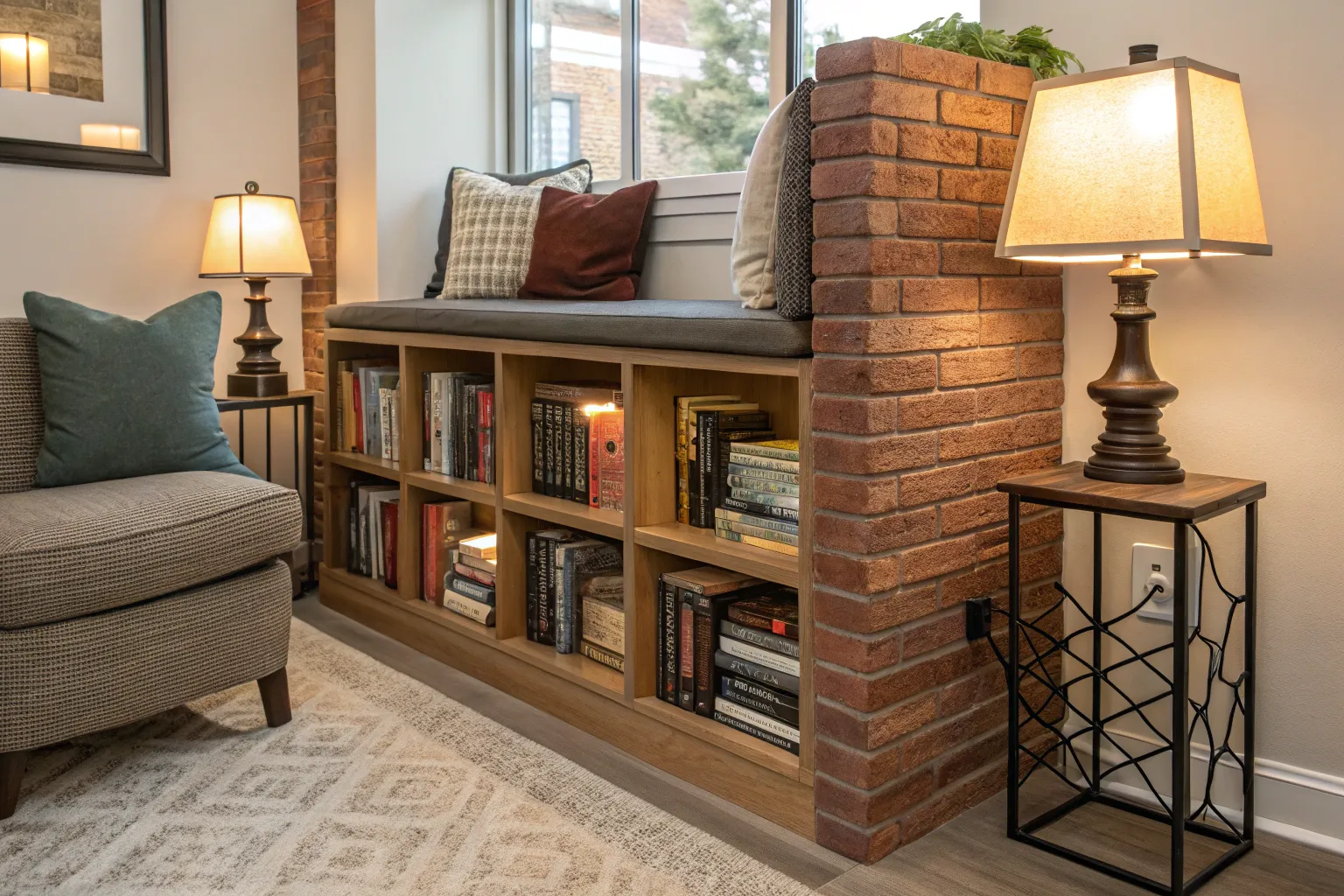Transform ordinary construction bricks into charming bookends that add both function and character to your shelves. These humble materials become sophisticated book supports through simple techniques that honor their industrial origins while elevating them to decorative status.
Why Bricks Make Perfect Bookends
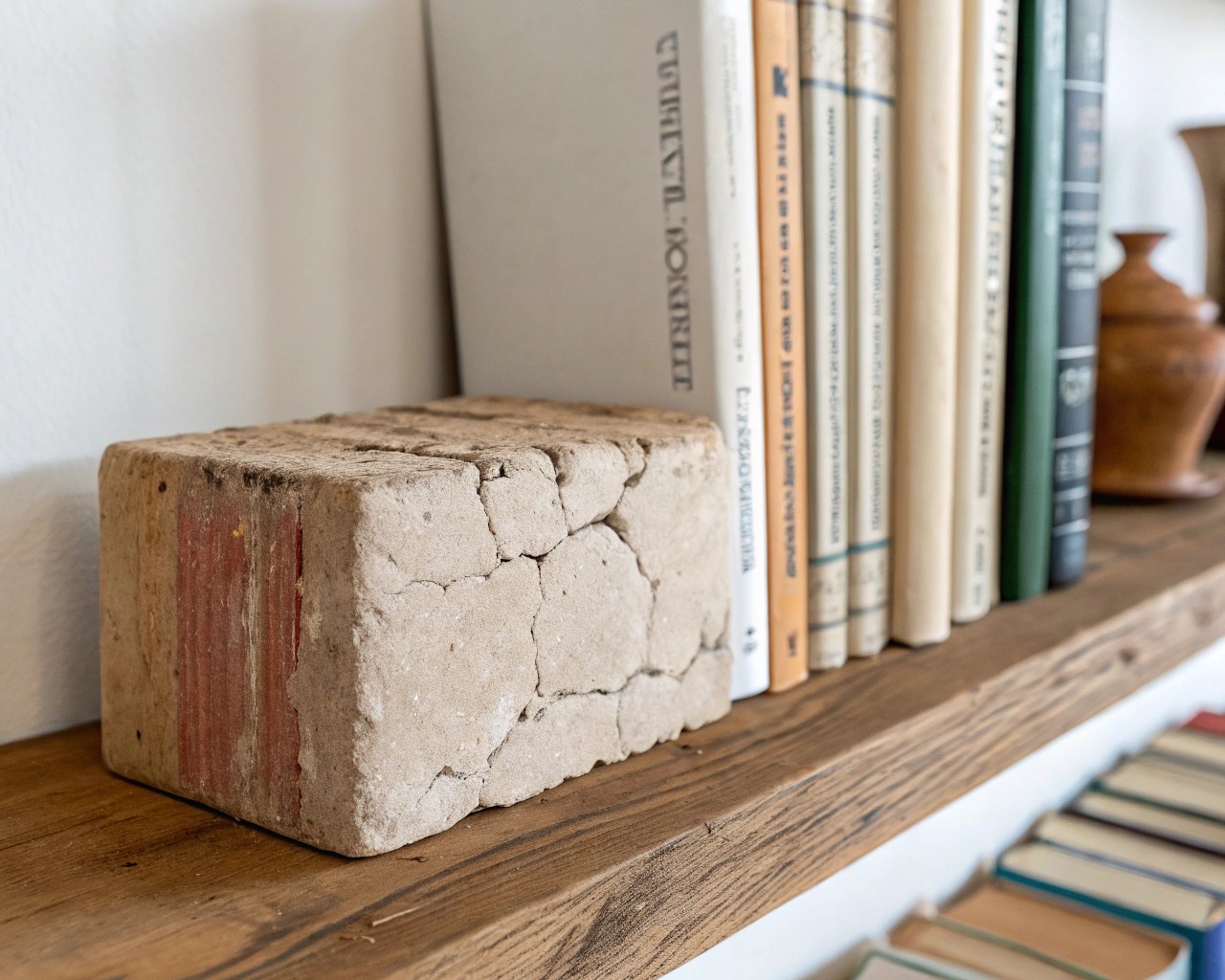
I’ve discovered that bricks offer the ideal combination of weight, stability, and versatility for bookend projects. A standard 4×8×2-inch concrete brick weighs approximately 4.5 pounds—heavy enough to support substantial book collections without sliding or tipping. The dense, uniform construction provides consistent performance across different shelf surfaces.
From an engineering perspective, bricks excel because of their low center of gravity and broad base. Unlike decorative bookends that can become top-heavy, brick bookends maintain stability even when supporting tall, heavy volumes. The porous surface texture also provides natural grip against shelf surfaces, reducing the need for additional stabilizing materials.
Essential Materials and Preparation
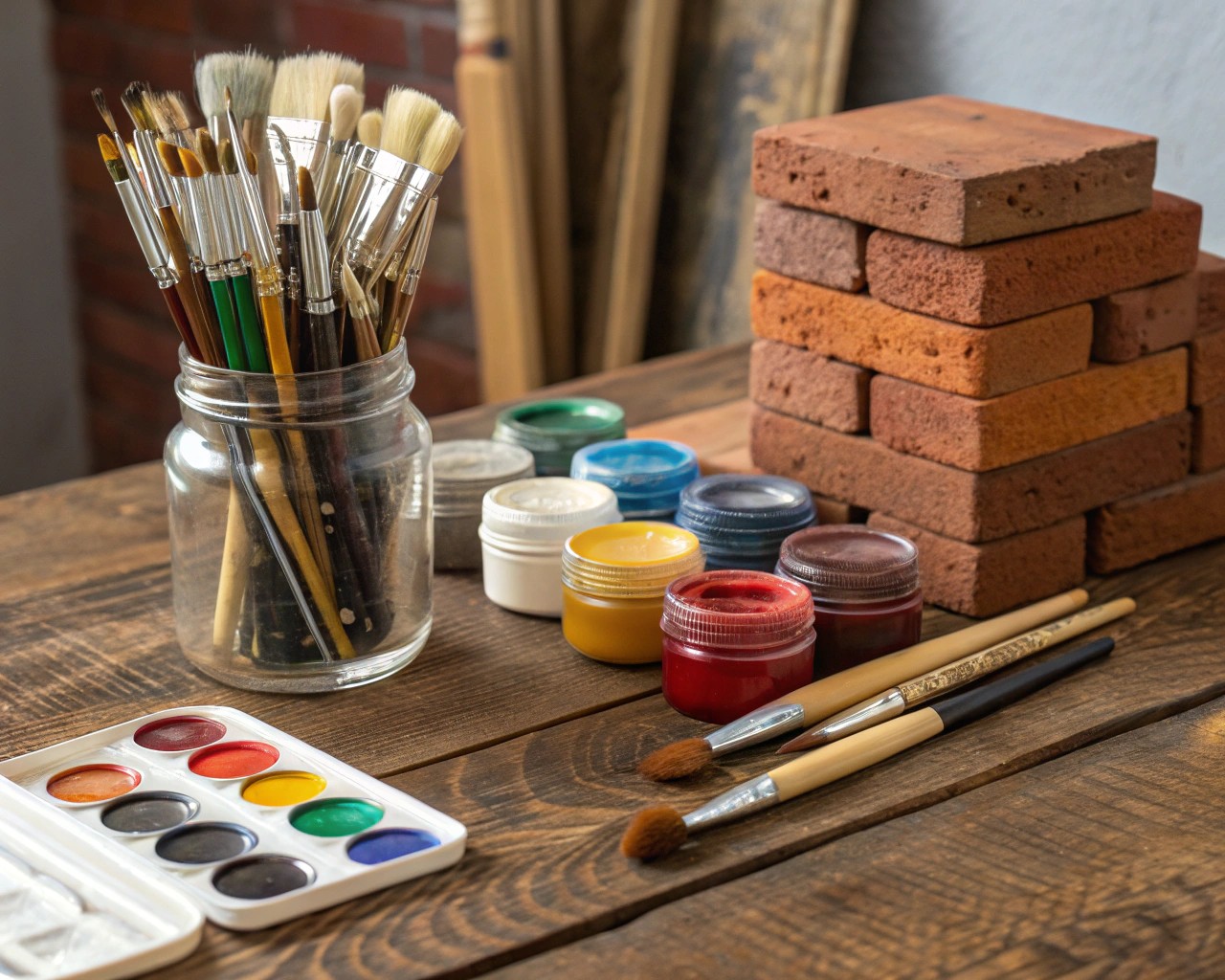
Materials needed:
- Standard concrete or clay bricks (aim for smooth surfaces without deep chips)
- High-quality acrylic paint (outdoor formulation for enhanced durability)
- White primer designed for masonry surfaces
- Fine-grit sandpaper (220-grit works well)
- Various brush sizes (1-inch flat, ½-inch angled, fine liner brushes)
- Felt pads or fabric scraps
- Clear protective sealer (optional for outdoor use)
Surface preparation forms the cornerstone of any successful brick transformation. Begin by scrubbing each brick with dish soap and a stiff brush to remove construction dust and residue. Even new bricks carry manufacturing debris that can interfere with paint adhesion. Allow complete drying—typically 24 hours in moderate humidity.
Light sanding with 220-grit paper smooths rough edges and creates better paint adhesion. Focus on corners and surfaces that will receive the most handling. This step also removes any stubborn residue that washing missed.
Three Distinctive Design Approaches
The Literary Classic
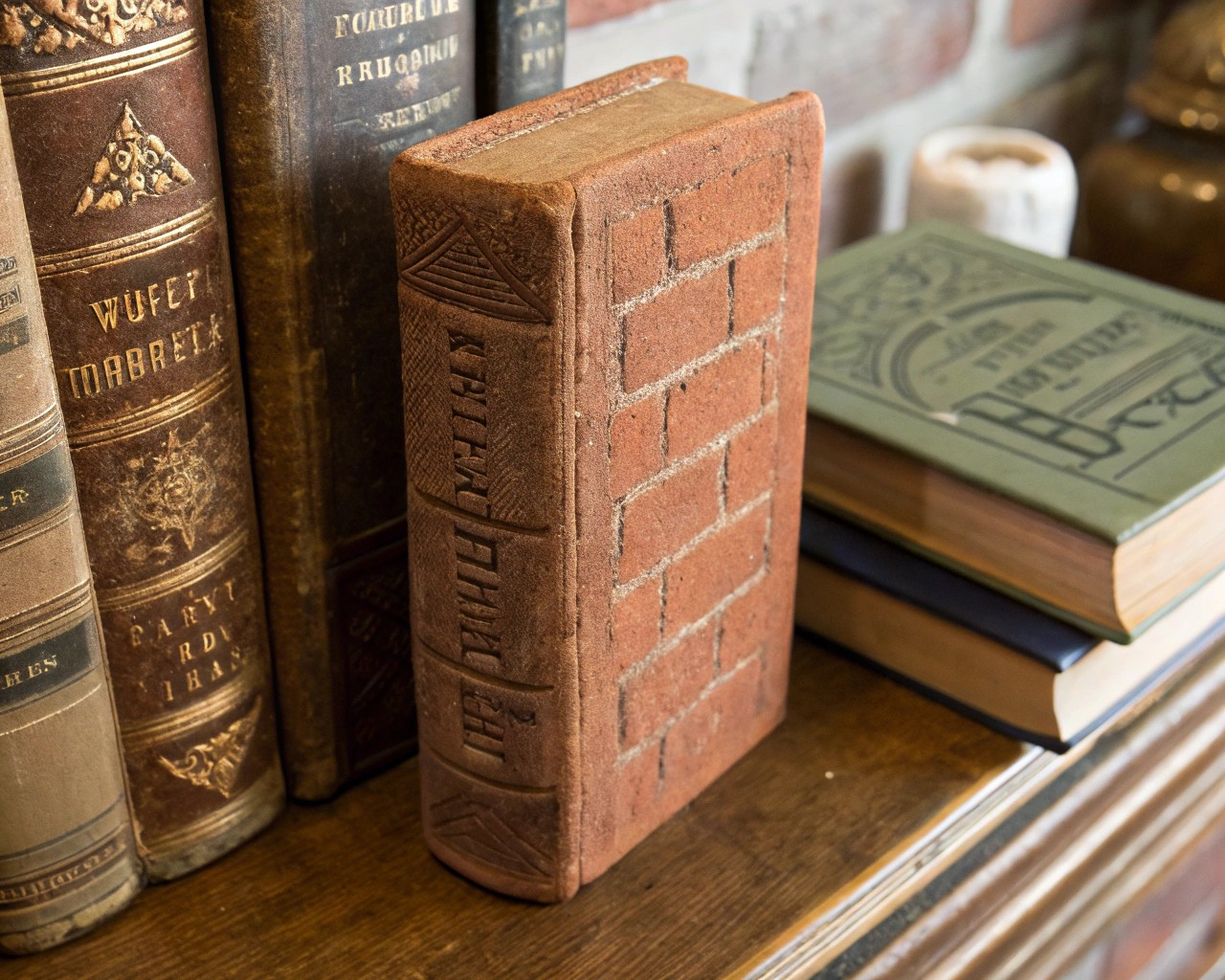
This approach transforms bricks into realistic book spines that blend seamlessly with your collection. Start with a white masonry primer to seal the porous surface and provide optimal paint coverage. Once dry, apply your chosen base color—consider deep burgundy, forest green, or classic navy for a sophisticated library aesthetic.
The key to authenticity lies in the details. Use a fine liner brush to add horizontal lines suggesting individual pages. Vary the spacing slightly to mimic how real books naturally settle. Add a slightly darker tone along the bottom edge to create shadow depth, then incorporate worn areas using gentle dry-brush techniques with lighter colors.
For the spine text, plan your layout carefully. I recommend sketching lightly in pencil first, then using a steady hand with a liner brush. Choose titles that reflect your interests—whether classic literature, beloved novels, or specialized subjects. The beauty lies in creating books that could realistically exist in your collection.
The Contemporary Minimalist
Modern aesthetics call for clean lines and subtle sophistication. This approach embraces the brick’s geometric form while adding refined touches that complement contemporary décor.
Begin with a single, sophisticated color palette. Matte charcoal, warm gray, or even pure white can create striking results. Apply paint in thin, even coats to maintain the brick’s natural texture rather than obscuring it entirely.
Consider dipped effects—painting just the bottom third or top edge in a contrasting color. Metallic accents work particularly well here. Apply painter’s tape for crisp lines, then brush on metallic gold, copper, or silver paint. The contrast between industrial brick and refined metallic creates visual interest without overwhelming the design.
The Artistic Statement
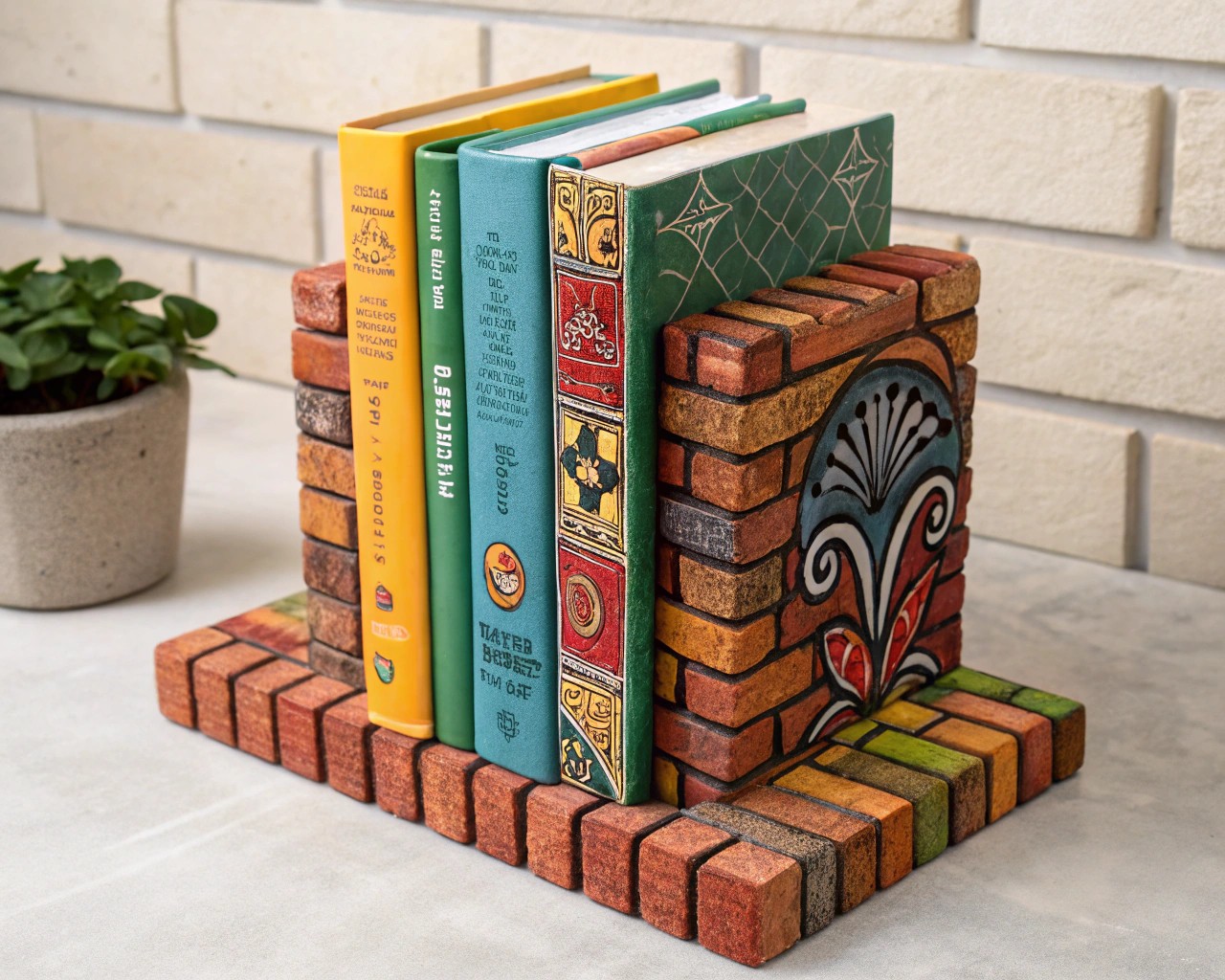
For those wanting bookends that spark conversation, artistic treatments offer unlimited creative possibilities. This approach views each brick as a canvas for personal expression.
Diorama bookends create miniature worlds atop your books. Paint the brick in a base color, then build scenes using small figurines, artificial moss, or miniature trees. Secure elements with strong craft glue, ensuring they won’t shift during normal use. Popular themes include pastoral scenes with tiny animals, urban miniatures, or seasonal landscapes.
Textural wrapping provides another artistic avenue. Heavy twine, rope, or fabric strips wound around the brick create interesting surface contrast. Secure the starting point with strong adhesive, then wrap in patterns—random for organic feel, or geometric for structured appearance. This technique particularly suits nautical, rustic, or bohemian décor styles.
Step-by-Step Transformation Process
Phase 1: Foundation Work
Apply masonry primer in thin, even coats using a quality brush. Work the primer into all surface irregularities—this step determines the final finish quality. Allow full curing time as specified by the manufacturer, typically 4-6 hours.
Phase 2: Base Color Application
Use high-quality exterior acrylic paint for durability and color retention. Apply with a flat brush, maintaining consistent stroke direction for uniform appearance. Two thin coats typically provide better coverage than one thick application. Allow proper drying time between coats.
Phase 3: Detail Development
This phase separates amateur from professional-looking results. Work systematically, completing one design element before moving to the next. Keep paint consistency appropriate for your brush size—thin slightly for fine detail work, use full-strength for broader areas.
Phase 4: Protective Finishing
For bookends intended for regular handling, apply a clear protective topcoat. Matte finishes maintain the paint’s original appearance while providing protection against fingerprints and minor abrasions.
Technical Considerations for Stability
Weight distribution affects bookend performance significantly. Standard bricks provide adequate weight for most applications, but particularly heavy book collections may require additional mass. Consider adhering a second brick to the bottom of your finished bookend, concealed but doubling the stabilizing weight.
Surface protection prevents shelf damage and bookend movement. Cut felt pads slightly smaller than the brick’s base footprint, allowing the felt to remain hidden while providing cushioning. For heavier applications, furniture pads designed for appliances offer superior protection and grip.
Slip resistance can be enhanced through strategic placement rather than additional materials. Position bookends so their weight bears slightly inward against the book collection, using gravity and friction together for maximum stability.
Advanced Finishing Techniques
Weathering effects add authentic character to literary-inspired bookends. After your base colors cure completely, use dry-brush techniques with slightly lighter or darker shades to suggest age and wear. Focus on edges and raised areas where natural wear would occur.
Color layering creates depth and visual interest. Apply your base color, allow complete drying, then add selective areas of complementary colors. Blend slightly while wet for seamless transitions, or maintain distinct boundaries for graphic effects.
Texture enhancement can transform smooth brick surfaces. Use sea sponges, rags, or specialized texture rollers to create surface interest. Apply technique while paint remains workable, adjusting pressure and pattern as desired.
Maintenance and Longevity
Properly finished brick bookends require minimal maintenance. Dust regularly with a soft cloth, avoiding abrasive materials that might damage painted surfaces. For deeper cleaning, use mild soap solutions and soft brushes.
Seasonal considerations matter primarily for outdoor applications. If using bookends in covered outdoor spaces, ensure adequate ventilation to prevent moisture accumulation. Indoor bookends face fewer environmental challenges but benefit from consistent temperature and humidity levels.
Touch-up protocols extend bookend life significantly. Keep small amounts of your original paint colors for minor repairs. Address chips or wear promptly to prevent moisture infiltration that could compromise the underlying brick structure.
The transformation from construction material to sophisticated home accessory represents more than mere craft project—it exemplifies how thoughtful design can elevate humble materials into objects of lasting beauty and function. These bookends serve their practical purpose while adding personality and charm to your living spaces, proving that the best home accessories often emerge from the simplest beginnings.

